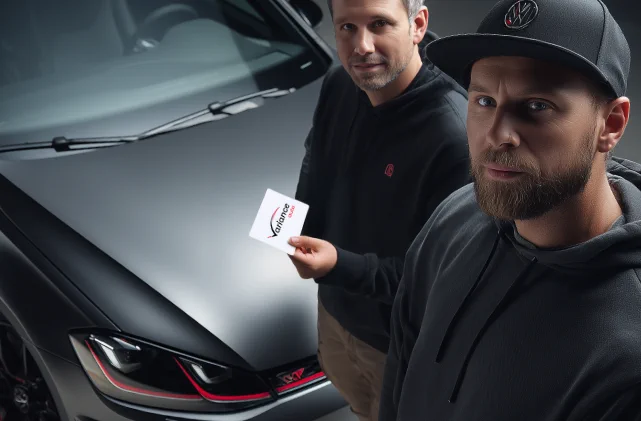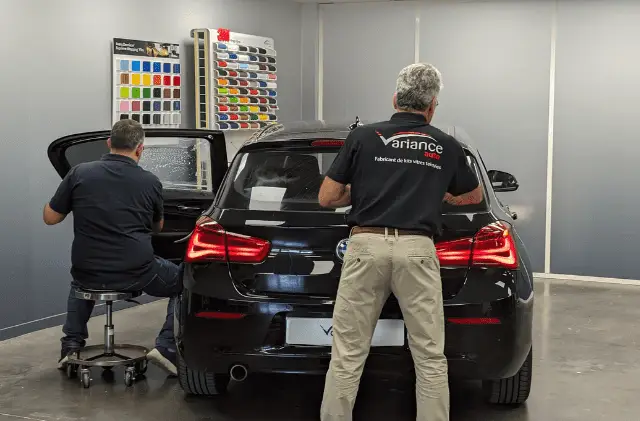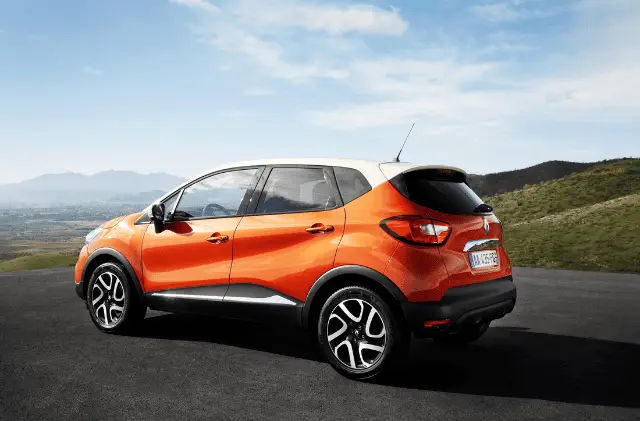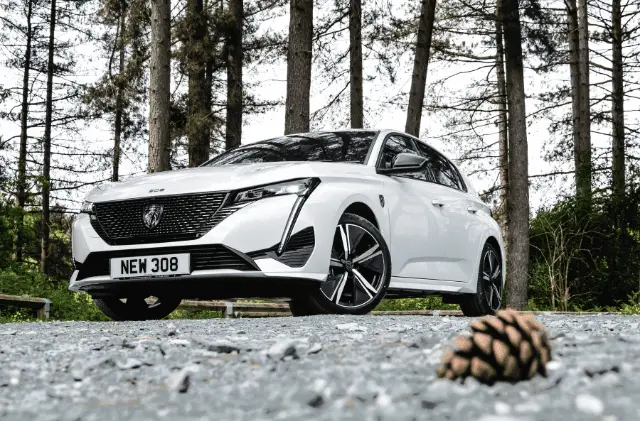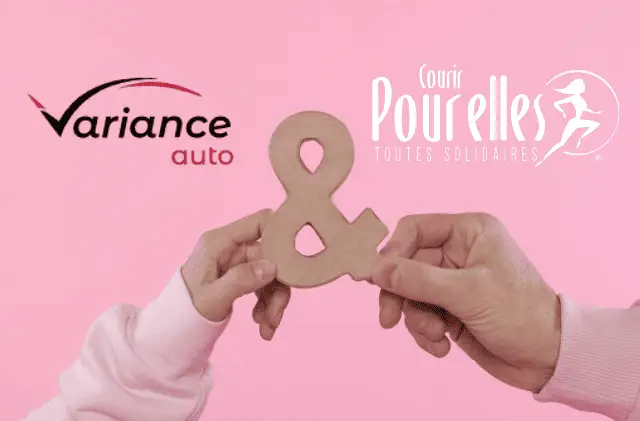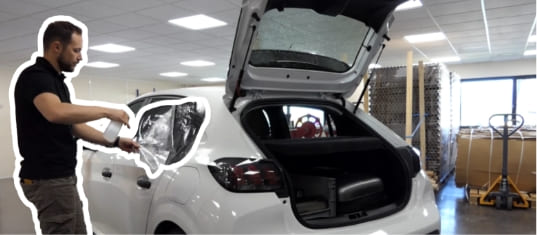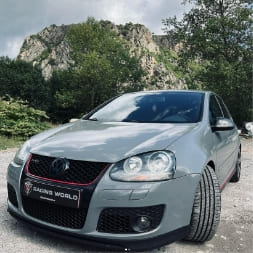
Le 09/06/2025
written by Laura P
What's the best way to protect your bodywork?
Body protection: wrapping or PPF?
Between everyday bumps, parking hazards and the heat of the sun, your car's bodywork is put to the test. These assaults can dull the paintwork and alter the appearance of your vehicle. So how do you keep your car's bodywork looking its best in the face of the vagaries of driving and the vagaries of the weather? Fortunately, there are two effective solutions: the wrapping and PPF. We explain everything you need to know to make the right choice 😉
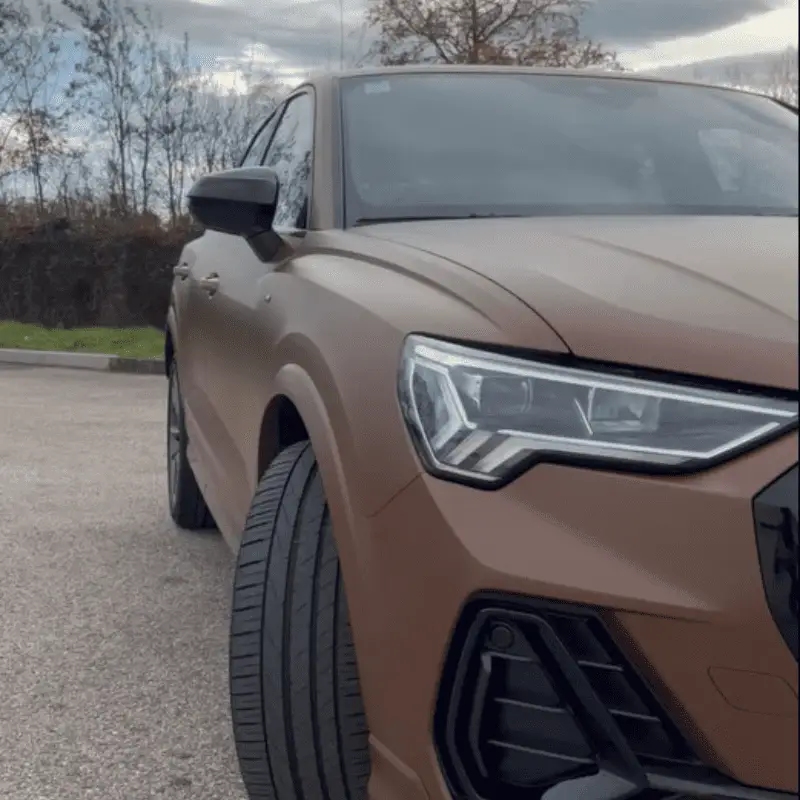
Solution number 1: wrapping
wrapping is the star of tuning and car customization! It's a thermoformable vinyl film applied directly to the bodywork.
The advantages of wrapping for Paint protection film
There are many advantages:
- Protection against micro-scratches, UV rays, light impacts and dirt;
- Unlimited personalization: all-purpose or extravagant matte colors, gloss, satin, matte, glitter, carbon, camouflage, chameleon, metallic, brushed or even chrome finishes! The choice is yours;
- Cost-effective alternative to full body painting;
- Reversible: you can remove the wrapping without damaging the original paintwork.
- Ideal for enthusiasts who want to change their look while protecting their bodywork!
Precautions to take before wrapping
Before you start wrapping, here are a few steps to take to ensure a clean, long-lasting result:
- Thorough cleaning: the surface must be perfectly clean, free of dust, grease or wax residue. Use a suitable bodywork cleaner;
- Paint inspection: avoid wrapping damaged paint (deep scratches, rust, flaking varnish);
- Ambient temperature: ideally between 15°C and 25°C, in an area sheltered from wind and particles;
- Tool preparation: soft squeegee, precision cutter, thermal scraper.
💡Pro tip: always test a small piece of film before covering the whole car. This ensures adhesion and the desired finish.
Good to know : wrapping can be applied to the entire body or just part of it, such as the hood, rear-view mirrors, bumper, roof andrear-end.
To find out more, read our article"Preparing your vehicle for wrapping", which explains how to thoroughly clean and prepare your vehicle for wrapping.
wrapping
It's a delicate step, but doable if you're meticulous and patient:
- Removal of sensitive parts (handles, mirrors, logos) to facilitate installation;
- Positioning the wrapping without gluing it right away: use magnets;
- Heat application: use a heat gun or hair dryer to soften the wrapping and a squeegee to remove air bubbles;
- Clean finish: fold into the gaps and heat lightly to set;
- Take your time: it's better to go zone by zone (hood, wings, doors, etc.) than to rush through everything!
💡Pro tip: in the event of bubbles, pierce them with a bubble piercer then marouflez.
Tools for successful installation like a pro!
This kit contains all the necessary installation materials!
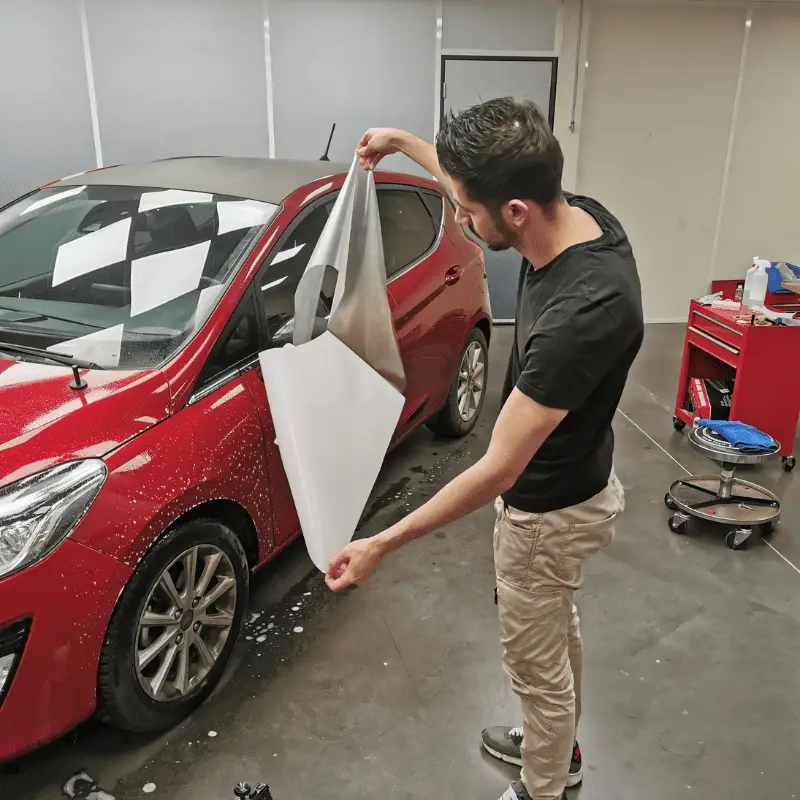
Solution number 2: PPF
PPF(Paint Protection Film) is a top-of-the-range solution for those who want to protect their bodywork without altering its appearance.
The advantages of PPF for Paint protection film
The PPF has many advantages, including but not limited to the following:
- Invisible protection: ultra-resistant, transparent film that does not alter the original shade;
- Self-healing: according to our models, micro-scratches disappear with the warmth of the sun or light heating;
- Preserves the value of the vehicle: ideal for new or classic vehicles;
- Resistant to UV rays, acid rain, gravel impacts and even insects;
- Perfect for perfectionists who want a shield that's discreet yet formidably effective.
Precautions to take before installing PPF
As with wrapping, good preparation is essential:
- Decontaminating wash: usesoapy water to remove encrusted impurities;
- Polishing if necessary: it is advisable to correct paint defects before application;
- PPF storage: store at room temperature, protected from light, before use;
- Specific equipment: silicone scraper, soapy water sprayer, cutter with new blade.
💡Pro tip: don't apply PPF on freshly redone paint (wait at least 30 days).
Need help choosing thickness or finish? Our article"How do I choose my Paint protection film for my vehicle?" reviews the essential criteria.
Laying the PPF
More technical than wrapping, PPF requires precision:
- Spray the bodywork with a soapy solution to allow the film to slide off;
- Place the film and adjust its position before removing the water with the squeegee;
- Apply localized heat to contour complex shapes;
- Trim edges neatly for an invisible finish.
💡Pro tip: start with the simplest areas (hood, roof) before tackling the fenders or bumpers.
Whether you're into stylish customization or invisible protection, both wrapping and PPF offer excellent Paint protection film. wrapping lets you have fun with style, while PPF offers discretion and durability. It's up to you to choose according to your desires and your budget!
Do you have any questions or need personal advice? Our team is at your service here.
